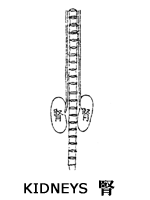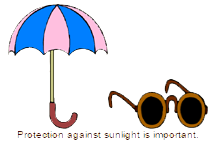Western Medicine
The management of SLE should be comprehensive and include drug and non-drug treatment. Therapy is individualized for each patient depending on the manifestations of disease and their severity.
Corticosteroids
Systemic corticosteroid therapy is the mainstay of treatment in SLE. However, not all patients require steroids, and steroids can do more harm than good. When needed, oral maintenance doses of prednisone or prednisolone are usually prescribed.
Severe symptoms affecting the whole body, such as sustained high fevers and severe blood disorders, often need to be treated with higher doses of corticosteroids. Involvement of organs such as the heart, lungs, and central nervous system also usually requires treatment with corticosteroids.
A topical steroid is usually prescribed for skin rashes.
NSAIDs
Mild symptoms of arthritis and muscular pain are usually managed with non-steroidal anti-inflammatory drugs (NSAIDs), such as indomethacin, naproxen and ketoprofen. More severe symptoms may need an antimalarial agent and occasionally low doses of corticosteroids may be required.
Antimalarials
The antimalarials chloroquine and hydroxychloroquine possess anti-inflammatory properties and have been found of benefit in treating inflammatory conditions which have an immunologic basis. They are usually used when other first-line therapies (such as NSAIDs) fail. They are prescribed for more severe skin and joint manifestations of SLE.
Immunosuppressants
As long-term corticosteroid therapy, particularly at the higher doses, tends to cause side-effects, immunosuppressants such as azothiaprine, cyclophosphamide and methotrexate are sometimes added in an attempt to lower the dose of corticosteriod required. These drugs suppress the immune response. As immunosuppressants themselves pose a risk of long-term toxicity they need to used with care, but can be useful in the treatment of acute and severe organ involvement.
Psychiatric support
The threat of a chronic disease can be very stressful. Visiting a doctor frequently and having many laboratory tests with long waits for the results can be an emotional burden.Emotional support in the treatment of SLE is essential. It is also important that patients have extensive rest.
Preventive measures
All possible means to prevent provocation or exacerbation of SLE should be undertaken. (See Prevention section.)
As SLE is an episodic disease and is characterized by exacerbation and remission, it is extremely important to withdraw therapy slowly when an exacerbation has quieted down. This avoids unnecessary drug toxicity.
Patients with SLE need a to see their doctors at least once every three to six months, even if the disease is inactive. Patients with active disease must be assessed more frequently.
Chinese Medicine
Treatment of SLE from a TCM perspective will depend on the symptoms of the individual patient. In addition to herbal decoctions used to alleviate disharmony pattern symptoms, treatment may include acupuncture for relieving pain and stiffness in the joints, and qi-gong to help focus the energy of the body in fighting the disease and strengthening the mind.
Examples of decoctions used for the different disharmony patterns
| Excessive toxic heat accumulation |
Therapeutic aim:To clear away heat and toxins, cool down the blood, protect theyin, remove obstructions in themeridians and clear up rashes.
Prescription: Qingying decoction
| shi gao |
gypsum |
| shu di huang |
processed rehmannia root |
| mai dong |
dwarf lilyturf tuber |
| zhi mu |
common anemarrhena root |
| niu xi |
achyranthes root |
For individuals with high fever, poor concentration and delirium, the dosages of heat-clearing drugs should be increased or the following added:
| shang shi gao |
unprocessed gypsum |
| huang lian |
golden thread |
| da huang |
rhubarb |
Some patent Chinese medicines likePurple Snowy Pill, Bezoar Bolus for Resurrection and Treasured Bolus can be taken at the same time.
Therapeutic aim:To replenish the yin, nourish and cool down the blood, and eliminate toxins.
Prescription: Modified Zhibai Dihuang pill
| zhi mu |
common anemarrhena root |
| huang bai |
amur cork-tree |
| shu di |
processed rhemannia root |
| shan yu rou |
Asiatic cornelian cherry fruit |
| shan yao |
common yam root |
| ze xie |
oriental water-plantain root |
| dan pi |
tree peony bark |
| fu ling |
Indian bread |
For individuals with spleen deficiency add:
| bai zhi |
large head atractylodes root |
| chen pi |
dried tangerine peel |
| fu ling |
Indian bread |
In cases of very high fever add:
| yin hua |
honeysuckle flower |
For dizziness add:
| ju hua |
chrysanthemum flower |
| chuan xiong |
Szechwan lovage root |
| Toxic factor attacking the heart |
Therapeutic aim:To nourish the yin, replenish the qi, calm the mind, and clear away heat and toxins.
Prescription: Modified Huanglian antidote decoction
| huang lian |
golden thread |
| huang qin |
baical skullcap root |
| huang bai |
amur cork tree |
| zhi zi |
Cape jasmine fruit |
For spleen deficiency add:
| dang shen |
pilose asiabell root |
| bai zhi |
large head atractylodes root |
For individuals with a feeling of chest fullness add:
| hou po |
magnolia bark |
| su geng |
perilla stem |
For yin deficiency add:
| yu zhu |
fragrant Solomon's seal rhizome |
| huang jing |
agastache or Solomon's seed |
| dong chong xia cao |
Chinese caterpillar fungus |
Therapeutic aim:To nourish the yin, tonify the kidneys, activate the blood circulation and eliminate toxins.
Prescription: Modified Siwu decoction
| dang gui |
Chinese angelica |
| chuan xiong |
Szechwan lovage root |
| shu di |
processed rehmannia root |
| bai shao |
white peony root |
For dampness-heat symptoms in the lower burner add:
| che qian zi |
plantain seed |
| Bi xie |
long yam |
| qu mai |
Chinese pink herb |
For individuals with backache add:
| tu si zi |
dodder seed |
| chuan duan |
Himalayan teasel root |
For joint pain add:
| ji xue teng |
suberect spatholobus stem |
| shen jin cao |
common club-moss herb |
| liu ji nu |
diverse wormwood herb |
| xu chang qing |
paniculated swallow-wort root |
| Impairment of the liver due to heat |
Therapeutic aim:To nourish the yin, cool down the blood, eliminate toxins, activate the blood circulation, clear away blood stasis and remove obstructions in the meridians.
Prescription: Modified Xiefu Zhuyu decoction
| tao ren |
peach seed |
| hong hua |
safflower flower |
| dang gui |
Chinese angelica |
| sheng di |
common yam root |
| chuan xiong |
Szechwan lovage root |
| chia hao |
red peony root |
| niu xi |
achyranthes root |
| jie geng |
platycodon root |
| chai hu |
Chinese tororwax root |
| zhi qiao |
orange fruit |
| gan cao |
liquorice root |
For individuals with severe blood stasis add:
| san leng |
bur-reed tuber |
| e zhu |
zedoary rhizome |
| yi mu cao |
motherwort herb |
| chuan xin lian |
andrographis herb |
| gui jian yu |
winged spindle tree |
For severe abdominal distention and pain below the ribs add:
| hou po |
magnolia bark |
| chen pi |
dried tangerine peel |
| xiang fu |
nut-grass |
For qi deficiency and residual heat toxins add:
| huang qi |
milk-vetch root |
| qin jiao |
large-leafed gentian |
| wu she |
black snake |
For over heated blood and a well-defined rash add:
| ji guan hua |
cockscomb |
| mei gui hua |
rose |
| ling xiao hua |
trumpet creeper flower |










